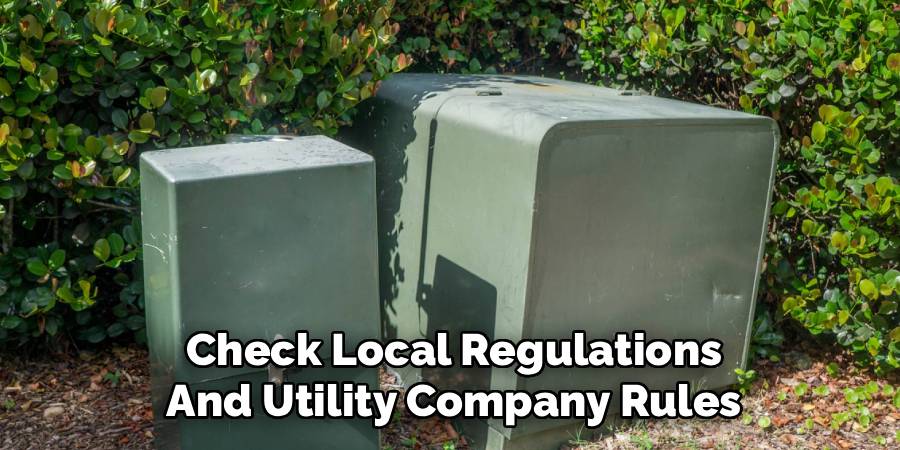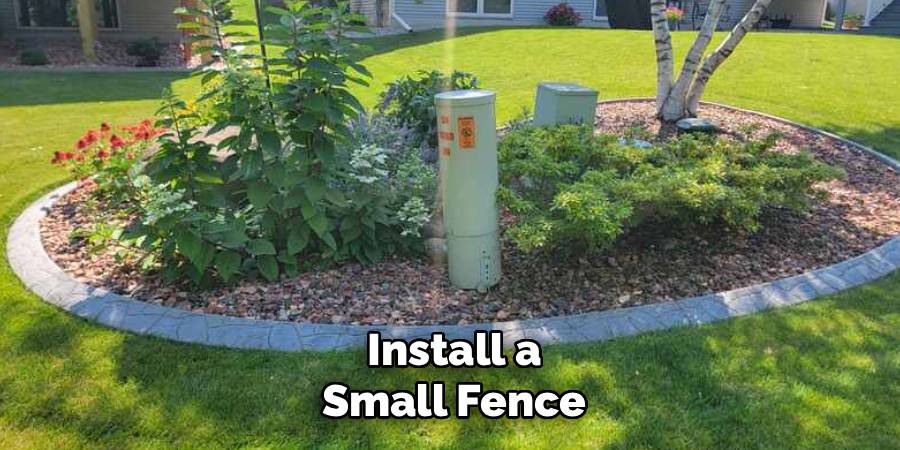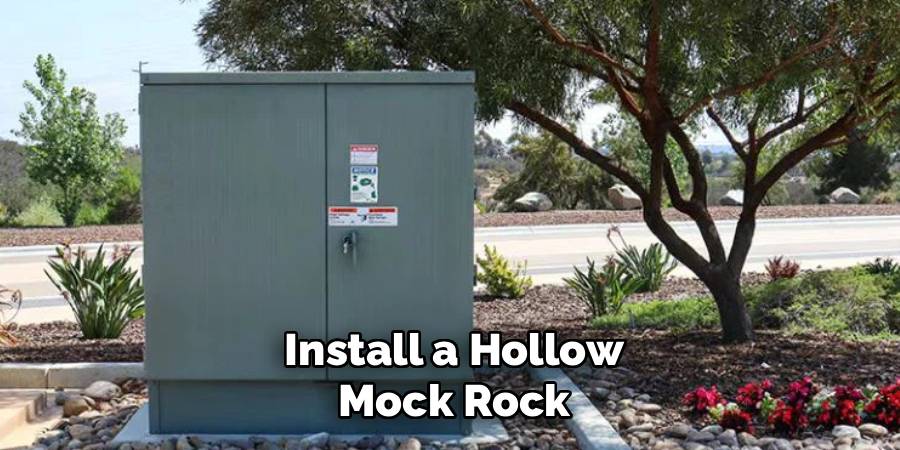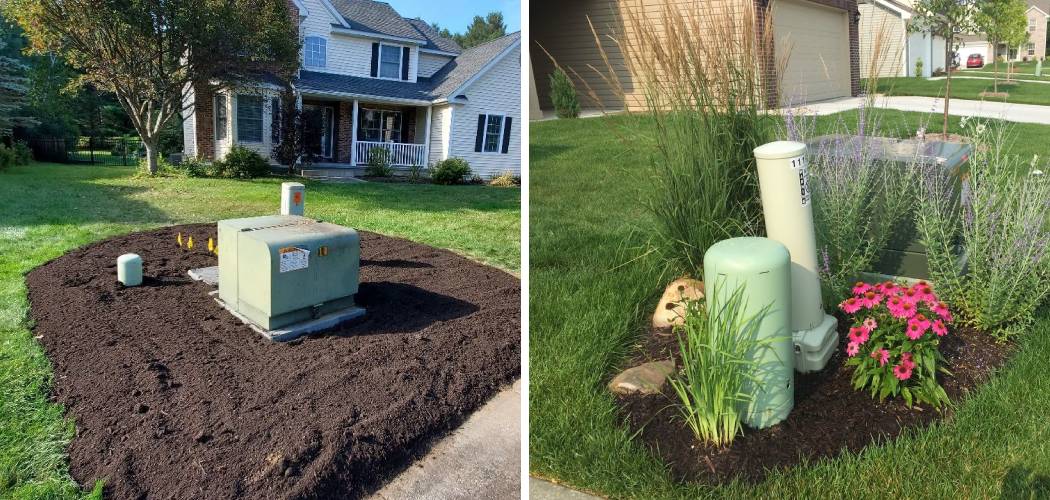That large, green metal utility box in the corner of your yard—often called a transformer box or pedestal—is a necessary part of modern infrastructure, but it’s rarely a welcome addition to a carefully planned landscape. These boxes can feel like a major obstacle to achieving a beautiful, seamless garden design. The good news is that with a bit of creativity and careful planning, you can easily camouflage this functional eyesore without obstructing access for utility workers. This guide will provide safe, attractive, and beginner-friendly ideas on how to hide transformer box in yard spaces, turning a visual negative into a landscape positive.

Whether you’re a seasoned gardener or a novice to landscaping, tackling the challenge of how to hide transformer box in your yard’s aesthetic can seem daunting. However, with the right techniques, it’s possible to transform this unavoidable feature into a harmonious part of your outdoor space. By using simple materials and thoughtful design, you can create a visually pleasing solution that maintains functionality and enhances the overall appeal of your landscape.
Decorative Fencing or Screens
One effective way to conceal a transformer box is by incorporating plants and greenery into the design. Opt for shrubs or ornamental grasses that grow tall enough to obscure the box without obstructing access for maintenance. Be sure to choose plants that thrive in your climate and require minimal upkeep. Additionally, arranging plants at varying heights can create a natural and layered look, making the box blend seamlessly into the surrounding environment.
Another option to consider is the use of decorative fencing or screens. These structures can be customized to match the style of your landscape, whether it’s modern, rustic, or traditional. Materials like wood, metal, or even lattice panels provide versatility while offering a clean and polished appearance. By painting or staining the fencing to complement your yard’s color scheme, you can further ensure that the transformer box becomes less of a focal point.
7 Step-by-Step Guide on How to Hide Transformer Box in Your Yard
Step 1: Check Local Regulations and Utility Company Rules
Before you dig a single hole or buy any materials, your first and most important step is to understand the rules. Contact your local utility company and ask for their specific guidelines regarding clearance around their equipment. Most companies require a significant amount of clear space—often 10 feet in front of the lock and 3-4 feet on the other sides—to ensure their technicians can safely access and service the box. Failing to adhere to these rules can result in your hard work being removed without notice. This step is non-negotiable for any project.

Step 2: Choose a Removable Screen
The best solutions are those that provide concealment while still allowing for quick and easy access. A custom-built screen or a pre-made decorative panel is a fantastic option. You can build a simple L-shaped or U-shaped screen using treated lumber and lattice panels, which can be painted to match your home or fence. Alternatively, decorative vinyl or composite privacy screens are available at most home improvement stores. The key is to ensure the structure is not permanently fixed to the ground, but rather can be easily lifted and moved away when service is required.
Step 3: Plan Your Landscaping Carefully
Strategic planting is one of the most effective ways to blend the utility box into your garden. When selecting plants, consider their mature size. You need plants that will grow tall enough to obscure the box but won’t have invasive root systems that could interfere with underground cables. Choose a mix of evergreen shrubs for year-round coverage and perennial flowers or ornamental grasses for seasonal color and texture. Arranging the plants in a layered, curved bed around the box will create a much more natural look than simply planting a straight hedge in front of it.
Step 4: Install a Small Fence
A small, decorative fence can be a stylish and effective way to block the view of the transformer box. A short section of picket fence, a modern horizontal slat fence, or even a rustic split-rail fence can be installed around the box on two or three sides. This creates an intentional-looking enclosure that defines the space while hiding the utility pedestal. As with any structure, ensure you install the fence panels outside the required clearance zone. This method works especially well if it matches existing fencing elsewhere in your yard, creating a cohesive look.

Step 5: Use Tall Planters and Pots
If you are looking for a non-permanent solution that adds vertical interest, consider using large planters. A collection of tall, oversized pots can be arranged in front of and around the transformer box. Plant them with tall ornamental grasses, upright evergreen shrubs like arborvitae, or even seasonal displays of flowers. This approach is excellent for renters or for those who want the flexibility to change their garden design frequently. The planters effectively screen the box while being easy to move when utility access is needed.
Step 6: Create a Rock Garden Feature
For a low-maintenance and naturalistic approach, consider building a rock garden around the transformer box. You can create a raised berm of soil around the sides and back of the box, again respecting the required clearances. Arrange various sizes of boulders and rocks to create a natural-looking outcropping. In the gaps between the rocks, you can plant drought-tolerant succulents, alpine plants, and low-growing groundcovers. This transforms the area from an eyesore into a unique and ruggedly beautiful garden feature that requires very little upkeep once established.
Step 7: Install a Hollow Mock Rock
One of the easiest and most convincing solutions is to use a hollow artificial rock. These mock rocks are made from lightweight fiberglass or polymer composite materials and are designed specifically to cover utility fixtures, wellheads, and other yard blemishes. They come in various sizes, shapes, and colors to mimic real stone. To use one, simply measure your transformer box and purchase a hollow rock that is large enough to cover it completely. Then, just place it over the top. It provides instant camouflage and can be easily lifted away for service.

Frequently Asked Questions (FAQ)
What Are the Most Important Safety Rules to Follow?
The two most critical rules are maintaining clearance and avoiding digging.
- Clearance: Always leave the required space around the box free of permanent structures or dense plantings. Utility companies typically require 10 feet of clear space in front of the side that opens/locks and 3-4 feet on the other sides.
- Digging: Before you dig any holes for fence posts or large plants, call 811 to have underground utility lines marked. This is a free service and is required by law to prevent dangerous accidents.
Can I Paint the Transformer Box?
In almost all cases, no. You should never paint the transformer box yourself. These boxes are owned by the utility company, and their specific color and markings are often part of a safety and identification system. Painting over them can cover up important warnings and may result in a fine or a requirement to pay for its restoration.
What Are Some Good Plants to Use for Screening?
Choose plants with non-invasive roots that won’t get too large. Good options include:
- Evergreens: Boxwood, Dwarf Arborvitae, Holly
- Ornamental Grasses: Feather Reed Grass, Little Bluestem
- Perennials: Black-Eyed Susan, Coneflower, Salvia
Planting a mix of these in a curved bed creates a beautiful, natural-looking screen.
Is It Safe to Plant Near a Transformer Box?

Yes, it is generally safe as long as you respect the clearance guidelines provided by your utility company. The box itself is grounded and shielded. The main risk is a person or plant interfering with the equipment or obstructing access for maintenance. By keeping the required distance, you ensure safety for both your plants and the utility workers.
Will the Heat from the Box Harm My Plants?
While transformers can generate some heat, it is typically minimal and dissipates quickly into the air. It is very unlikely to be hot enough to harm plants that are planted at the recommended distance from the unit. The bigger concern is ensuring the plants don’t grow so dense that they restrict airflow, so occasional pruning is a good practice.
Conclusion
A utility transformer box doesn’t have to be a permanent blight on your landscape. With a creative approach that prioritizes safety and access, you can easily integrate it into a beautiful garden design. Whether you choose to use strategic plantings, a decorative screen, or a clever mock rock, the key is to work with the object rather than against it. By respecting clearance rules and thinking of the solution as a design opportunity, you can successfully reclaim your yard’s aesthetic. Now that you have several ideas on how to hide transformer box in yard, you can confidently choose the best method for your space and turn that green box into a garden highlight.
About
Jovie Mathews is a distinguished figure in the world of Diy design, with a decade of expertise creating innovative and sustainable Diy solutions. His professional focus lies in merging traditional craftsmanship with modern manufacturing techniques, fostering designs that are both practical and environmentally conscious. As the author of diy, Jovie Mathews delves into the art and science of garden-making, inspiring artisans and industry professionals alike.
Education RMIT University
(Melbourne, Australia) Associate Degree in Design (Jovie Mathews) Focus on sustainable design, industry-driven projects, and practical craftsmanship. Gained hands-on experience with traditional and digital manufacturing tools, such as CAD and CNC software.
Nottingham Trent University
(United Kingdom) Bachelor’s in backyardik.com and Product Design (Honors) Specialized in product design with a focus on blending creativity with production techniques. Participated in industry projects, working with companies like John Lewis and Vitsoe to gain real-world insights.
Publications and Impact
In diy, Jovie Mathews his insights on indoor design processes, materials, and strategies for efficient production. His writing bridges the gap between artisan knowledge and modern industry needs, making it a must-read for both budding designers and seasoned professionals.

